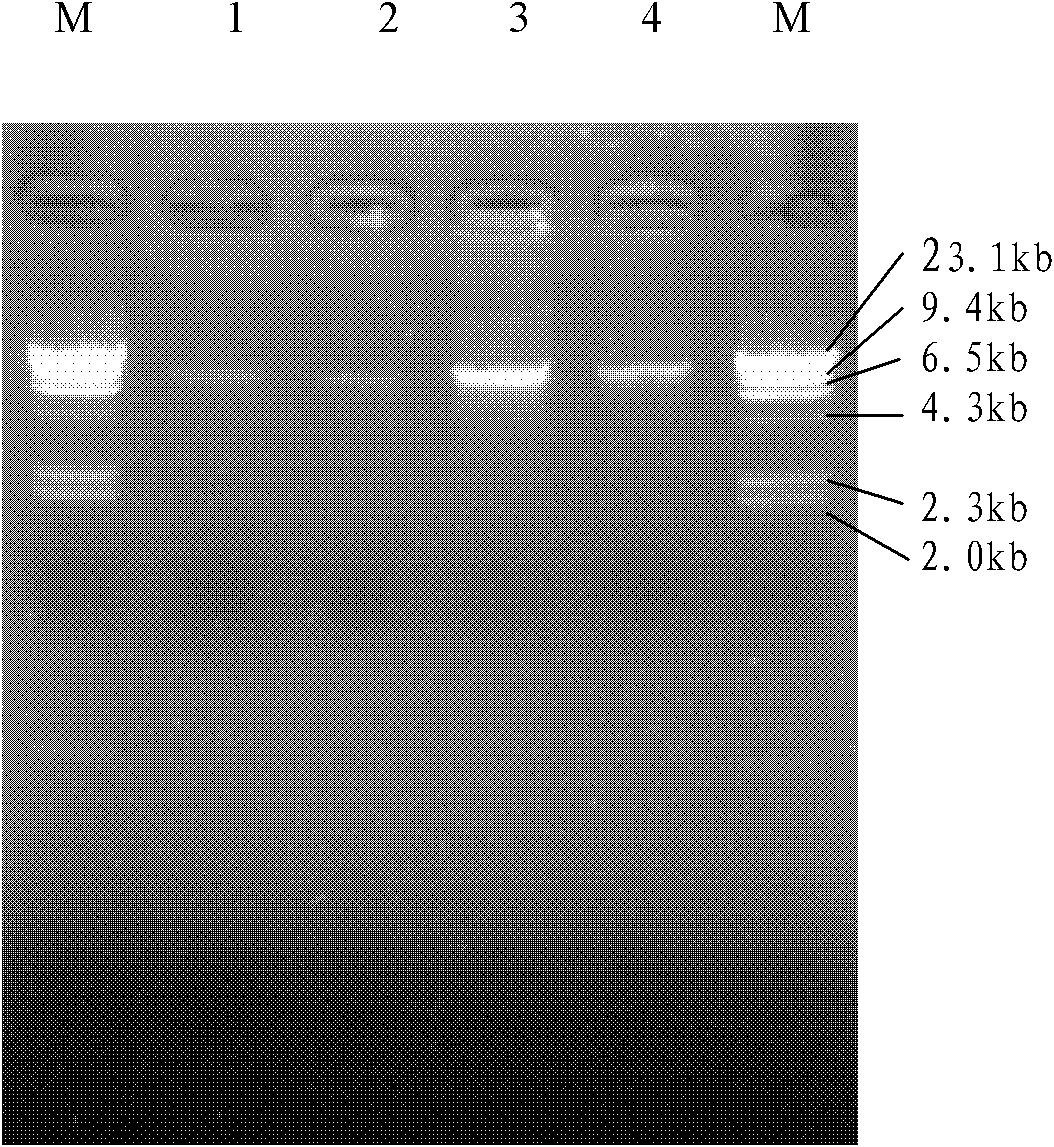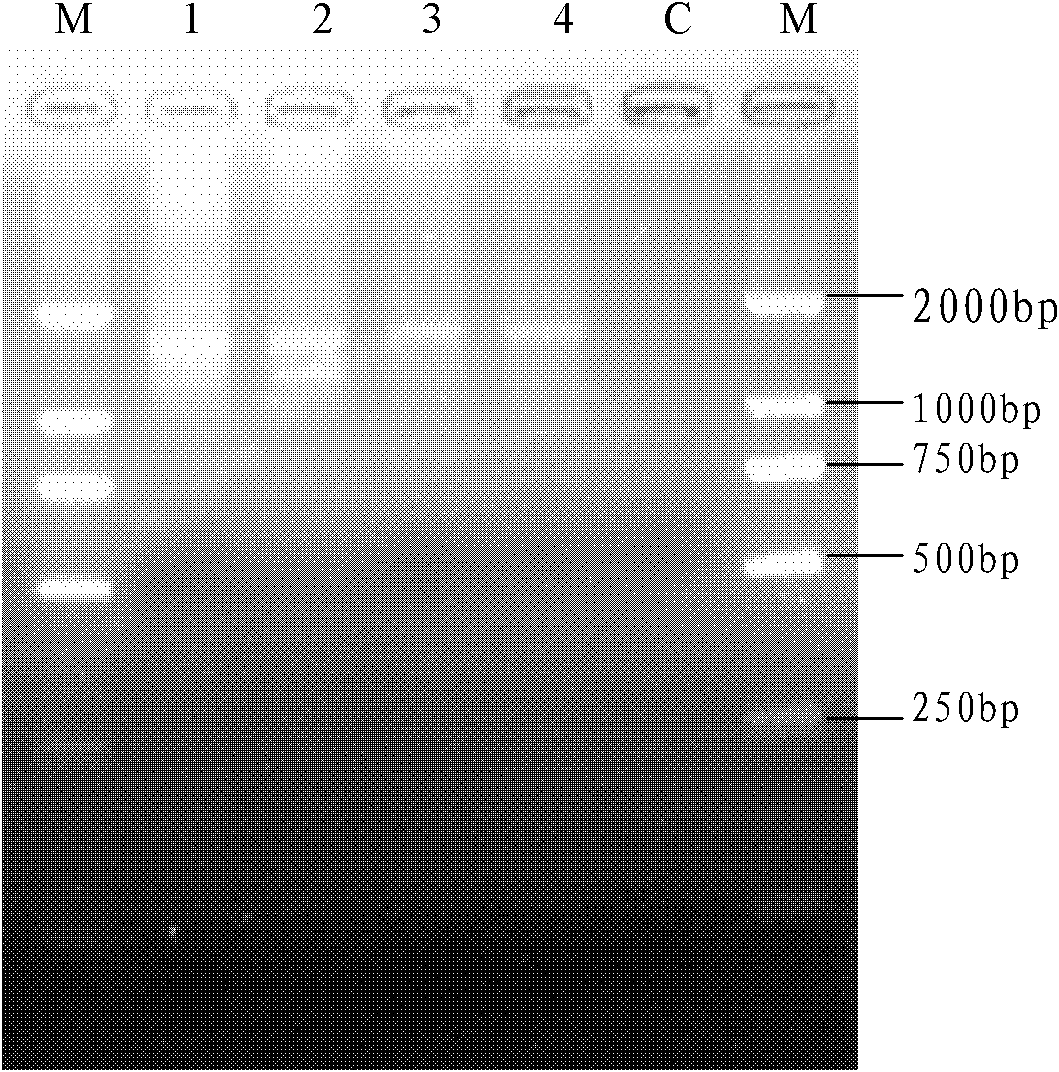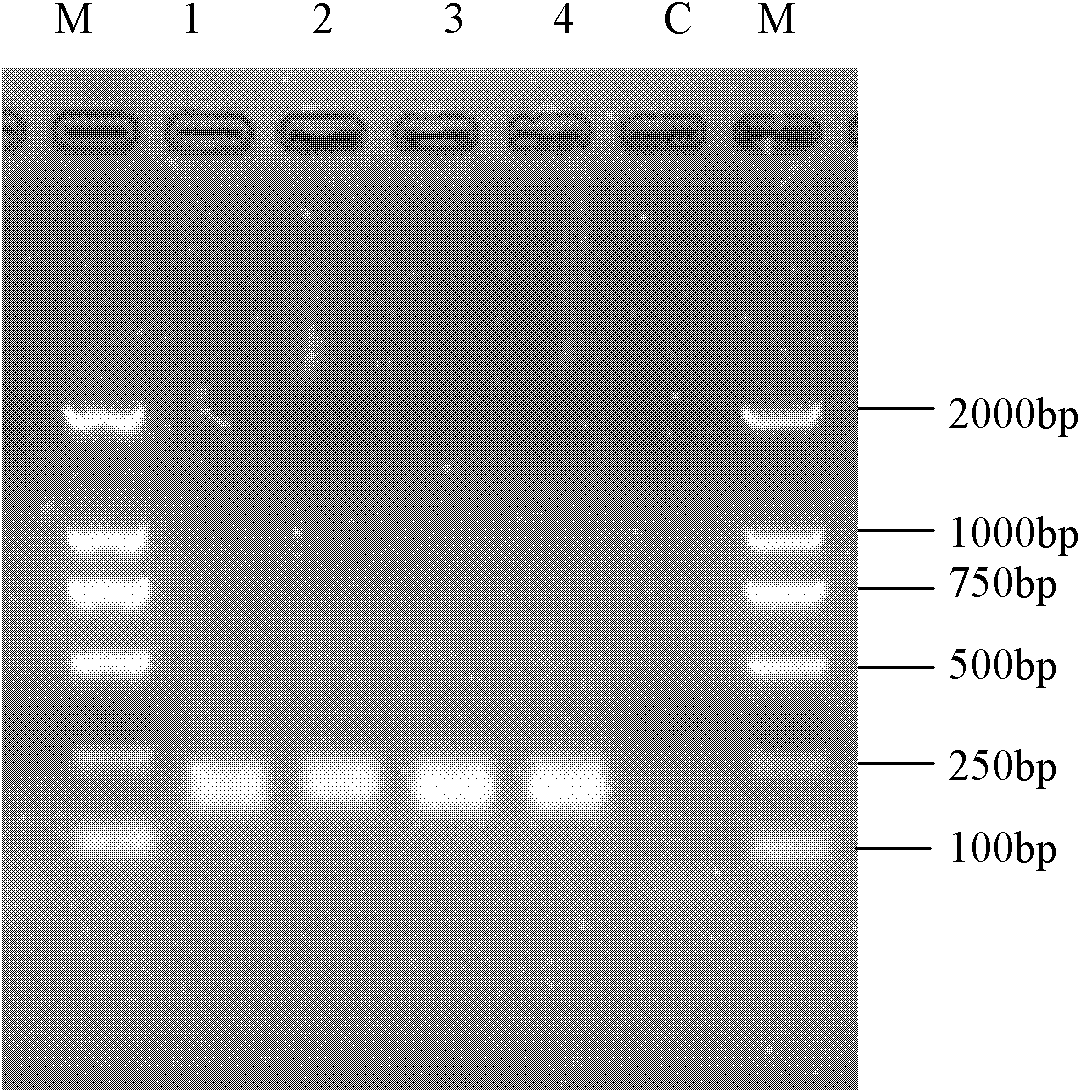Method and kit for extracting total DNA of soil and sediment
An extraction method and sediment technology, applied in the field of soil and sediment total DNA extraction methods and extraction kits, can solve the problems of high toxicity, high pollution, pollution, long time, etc., and achieve broad application prospects and high sample purity.
- Summary
- Abstract
- Description
- Claims
- Application Information
AI Technical Summary
Problems solved by technology
Method used
Image
Examples
Embodiment 1
[0062] Embodiment 1: the selection of humic acid complexing agent concentration
[0063] This kit was used to investigate the effect of the concentration of humic acid complexing agent on the extraction efficiency by taking wetland soil, marine sediment and farmland soil as objects. The sample size is 0.3g, wherein the concentration of calcium chloride solution is 0, 0.1, 0.2, 0.3, 0.4, 0.5mol / L, respectively, 1ml is added, and the extraction is carried out according to the method of the present invention, and the time spent is about 60min. The extracted DNA was electrophoresed, stained, photographed, and qualitatively and quantitatively analyzed using an ultraviolet spectrophotometer. The results show that when the concentration of calcium chloride solution is 0 and 0.1mol / L respectively (i.e. the ratio of sample wet weight and calcium ion ≥ 3g / mmol), although the recovery rate of DNA is higher, it is 10~15μg / g dry soil, However, the extracted DNA solution is yellow and cont...
Embodiment 2
[0064] Example 2: Bacterial Cell Lysis Vortex Oscillation Time Selection
[0065] Using this kit, the vortex oscillation time after adding cell lysate and denaturant was optimized for 0.3g of wetland soil and farmland soil respectively. Wherein the humic acid complexing agent uses 1ml of 0.2mol / L calcium chloride solution, pH 7.5, and the vortex oscillation time during cell lysis is selected 5min, 10min, 15min respectively, and is extracted according to the method of the present invention, and the time spent is about 70min. DNA electrophoresis, staining, photography, and qualitative and quantitative analysis using an ultraviolet spectrophotometer. The results showed that the DNA recovery rate of the environmental samples shaken for 5 minutes was significantly lower, lower than 1.0 μg / g dry soil; but after more than 15 minutes, the DNA recovery rate did not increase significantly, and a large number of DNA fragments appeared, which is necessary for long-term Molecular biology ...
Embodiment 3
[0066] Example 3: Extraction of total DNA from different soil samples
[0067] Using this kit and determined extraction conditions, the total DNA in farmland soil, grassland soil, wetland soil, and marine sediments was extracted respectively, and the extraction was carried out according to the method of the present invention, and it took about 60 minutes. Take 10 μL of DNA for electrophoresis, the gel is stained with EB, the gel imaging system is photographed, and the qualitative and quantitative analysis is carried out with a UV spectrophotometer. The electrophoresis results are as follows: figure 1 shown. According to the figure, the kit can obtain total DNA from different soils and sediments, the length of DNA fragments is 10-20kb, there is no degradation and no RNA pollution. The ultraviolet absorption detection was carried out on each sample respectively, indicating that the obtained DNA samples formed a uniform DNA absorption peak at 260nm, and there was no obvious prot...
PUM
| Property | Measurement | Unit |
|---|---|---|
| diameter | aaaaa | aaaaa |
Abstract
Description
Claims
Application Information
 Login to View More
Login to View More - R&D
- Intellectual Property
- Life Sciences
- Materials
- Tech Scout
- Unparalleled Data Quality
- Higher Quality Content
- 60% Fewer Hallucinations
Browse by: Latest US Patents, China's latest patents, Technical Efficacy Thesaurus, Application Domain, Technology Topic, Popular Technical Reports.
© 2025 PatSnap. All rights reserved.Legal|Privacy policy|Modern Slavery Act Transparency Statement|Sitemap|About US| Contact US: help@patsnap.com



